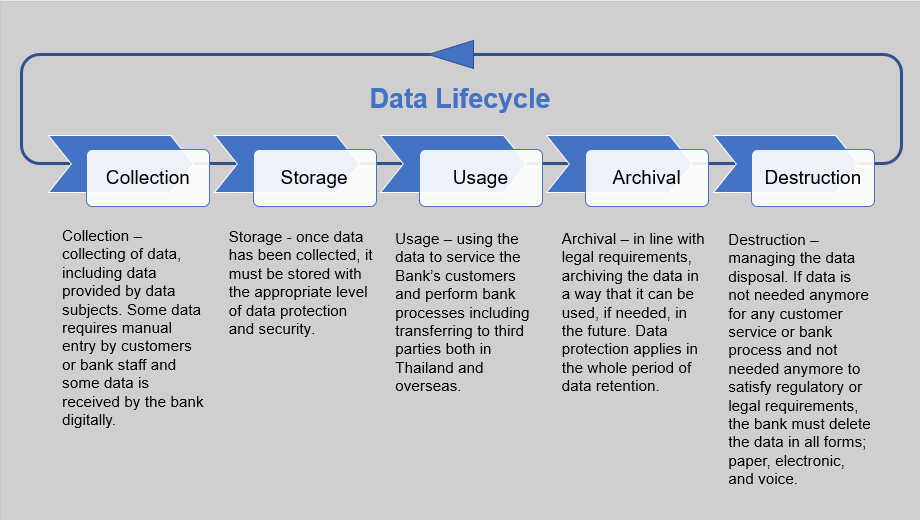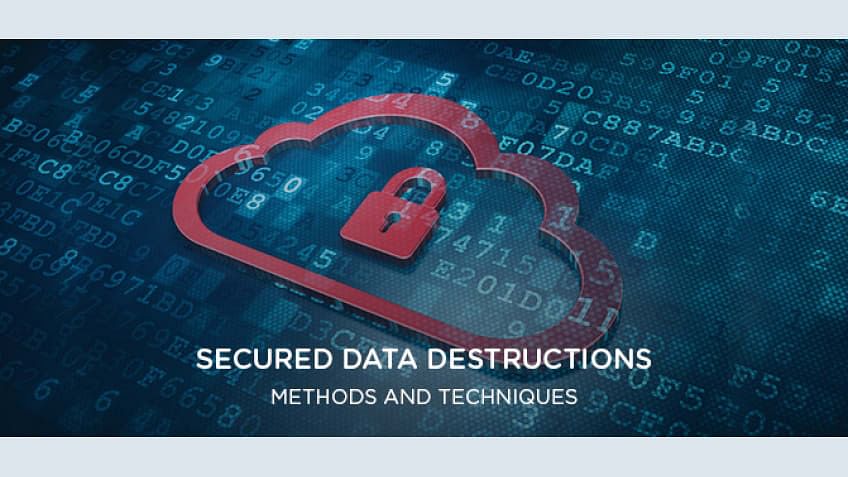The Crucial Nature of Information Destruction in Upholding Computer Safety Services and Protecting Against Unauthorized Access
In an era where information breaches and identification theft are significantly widespread, the relevance of reliable data destruction can not be overemphasized. Numerous approaches, from data wiping to physical destruction, offer as crucial safeguards against unauthorized gain access to.
Relevance of Information Destruction
In a progressively digital globe, the significance of data damage can not be overemphasized. As organizations amass huge amounts of sensitive info, the potential repercussions of falling short to effectively manage and dispose of that information come to be significantly severe. Data breaches, identity theft, and corporate reconnaissance posture significant dangers, emphasizing the need of reliable data destruction methods.

Furthermore, as innovation progresses, so as well do the methods through which harmful actors look for to manipulate delicate details. Organizations needs to stay vigilant and aggressive in their information damage strategies to safeguard against these developing hazards. By prioritizing data destruction, firms not only shield their possessions but likewise foster count on among customers and stakeholders, demonstrating a commitment to responsible information monitoring and safety and security methods.
Methods of Effective Information Devastation
To ensure the permanent and complete destruction of sensitive information, companies can utilize a selection of effective techniques tailored to their certain requirements. Among one of the most common techniques is data wiping, which includes using specialized software application to overwrite existing information multiple times, making recovery practically difficult. This is specifically beneficial for hard disks and solid-state drives, where standard deletion approaches are insufficient.
Another efficient strategy is degaussing, which uses solid magnetic areas to disrupt the magnetic domain names on storage space media, making the data irretrievable. This method is especially matched for magnetic storage space tools, such as disk drive and hard drives.
Physical destruction is likewise a practical choice, entailing the shredding, squashing, or incineration of storage space devices. This approach warranties that data can not be recovered, making it ideal for companies handling very delicate information.

Conformity With Data Security Regulations
Organizations must not only concentrate on reliable information devastation techniques however likewise guarantee conformity with data defense laws that regulate how sensitive details is managed and taken care of. Following these guidelines is necessary for preserving and safeguarding individual information client trust. Laws pop over here such as the General Information Protection Regulation (GDPR) in the European Union and the Health And Wellness Insurance Coverage Transportability and Responsibility Act (HIPAA) in the United States enforce rigorous standards on data administration, that include needs for the safe disposal of sensitive info.
To accomplish conformity, organizations have to execute extensive information damage plans that straighten with these legal frameworks. This includes recognizing data that needs damage, developing procedures for protected methodsâEUR" such as shredding physical media or utilizing software application that meets sector requirements for data wipingâEUR" and preserving in-depth documents of damage tasks. Routine audits needs to be conducted to make certain adherence to these plans and to identify any type of possible areas for enhancement.
Failing to abide by information protection regulations can cause significant legal implications, including large penalties and damages to an organization's credibility. Integrating compliance into information destruction practices is not only a legal obligation but additionally an important component of a durable info protection technique.
Repercussions of Poor Data Handling
Poor information handling can cause extreme consequences that extend past instant functional obstacles. Organizations might deal with substantial economic losses due to information breaches, which typically cause pricey removal efforts, lawful costs, and regulative penalties. These economic implications can prevent and stress sources development, inevitably influencing an organization's profits.
Furthermore, inadequate information handling can severely harm a company's credibility. Clients, partners, and stakeholders might shed count on an entity that stops working to Clicking Here shield sensitive information, leading to decreased client commitment and prospective loss of service chances. This disintegration of trust fund can take years to rebuild, if it can be restored in any way.
Furthermore, companies can face lawful ramifications arising from non-compliance with data security policies. Such violations might lead to charges and investigations, compounding the financial concern and further staining the company's picture.
In the realm of cybersecurity, poor data administration techniques can develop susceptabilities that make systems more at risk to unapproved access and cyberattacks. Ultimately, these consequences underscore the crucial value of executing durable data taking care of procedures to secure sensitive details and maintain organizational honesty.
Finest Practices for Secure Information Disposal


First of all, information should be classified according to its level of sensitivity. Sensitive info calls for much more rigorous disposal approaches, such as shredding physical documents and making use of sophisticated software application for digital information cleaning. Using qualified data devastation solutions makes certain conformity with industry laws and standards.
Second of all, organizations need to execute an information disposal plan that mandates normal audits. This plan ought to describe the treatments for data retention pop over to these guys and damage, making certain that obsolete information is thrown away without delay and safely. Educating employees on these methods is vital to fostering a culture of security understanding.
Lastly, keeping in-depth documents of disposed information boosts accountability and gives a clear audit route. This documentation ought to consist of the sort of data destroyed, the approach made use of, and the date of disposal.
Final Thought
Embracing durable techniques such as data wiping, degaussing, and physical destruction, alongside conformity with laws like GDPR and HIPAA, is necessary for securing delicate details. Neglecting appropriate information disposal practices can lead to serious repercussions, including information violations and lawful consequences.
In an age where data violations and identity burglary are significantly widespread, the significance of reliable information destruction can not be overemphasized. data destruction. Information violations, identification burglary, and corporate reconnaissance posture considerable risks, underscoring the requirement of effective data damage methods
Compliance with regulations such as GDPR and HIPAA mandates that organizations implement stringent information security measures, consisting of the protected devastation of data at the end of its lifecycle.
By focusing on information devastation, companies not just shield their assets but likewise foster depend on among stakeholders and clients, showing a dedication to responsible data management and safety and security methods.
Organizations must not only concentrate on reliable data devastation approaches however likewise make certain conformity with information security policies that regulate just how sensitive information is handled and disposed of.